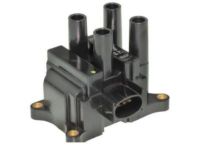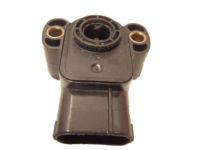Popular OEM Ford Ranger Parts
- Body & Hardware Parts View More >
- Electrical Parts View More >
- Interior & Exterior Trim Parts View More >
- Air & Fuel Delivery Parts View More >
- Steering Parts View More >
- Emission Control & Exhaust Parts View More >
- Charging & Starting Parts View More >
- Engine Parts View More >
- Belts & Cooling Parts View More >
- Suspension Parts View More >
- Brakes Parts View More >
- A/C & Heating Parts View More >
Why Buy Genuine Ford Ranger Parts From FordPartsDeal.com
FordPartsDeal.com offers a smart and convenient way to buy genuine parts online. We sell new OEM Ford Ranger parts. Authorized dealers directly provide all the Ford Ranger parts and assemblies to ensure the optimal quality and fit. We also provide all properly fitting Ford Ranger parts specific to your model. When you shop here, you get real Ford value at highly competitive prices. All our products come with the same Ford warranty available at other dealerships. Our easy-to-use catalog helps you quickly identify the right part for your car. You'll receive fast shipping from our warehouse network, keeping your Ford Ranger running smoothly. Our staff consists of Ford professionals who are ready to assist you. We aim to treat each customer as if they were stepping out of a Ford showroom. VIN verification and our live support ensure that the part you order is the right Ford Ranger part for your vehicle.
Ford introduced the Ford Ranger lineup of pickup trucks starting in 1982, with four distinct generations of development. The 2019 reintroduction of the Ford Ranger in the U.S. utilizes the T6 platform, placing it firmly in the mid-size pickup category. The Ford Ranger is powered by a 2.3-liter EcoBoost engine, producing 270 horsepower and 310 lb-ft of torque, paired with a 10-speed automatic transmission for superior performance and exceptional fuel efficiency. This powertrain system creates effortless acceleration along with handling precision which makes the Ford Ranger capable for different road situations. The towing capacity of this vehicle extends to 7,500 pounds due to its rear-wheel-drive system which buyers can enhance with an 4-wheel-drive configuration for better traction. The Ford Ranger maintains stability on rough terrains through its suspension system which consists of independent front and leaf-spring rear components. The Ford Ranger comes ready with innovative safety systems such as pre-collision assist together with lane-keeping assist which enhance the driving security. Maintenance seekers can obtain genuine Ford Ranger parts which remain faithful to manufacturer-established quality protocols so vehicles maintain excellent operational performance as well as reliability throughout extensive use periods.
Ford Ranger issues group into engine timing signals, fuel metering, and idle control. At highway speed, the Ranger can buck or misfire without setting codes. An intermittent camshaft synchronizer assembly loses phase and confuses the PCM. Listen for chirps, check knock sensor data, and replace the camshaft synchronizer assembly. Follow Ford testing procedures for accurate diagnosis. In fuel and air management, a Ranger may hesitate under moderate acceleration. A drifting throttle position sensor skews load, causing lean surges and stumbles. Verify voltage sweep, inspect harness routing, and install a new throttle position sensor. For idle stability, a Ranger can be hard to start cold or stall at lights. A sticking idle air bypass valve restricts airflow and prevents steady idle. Clean deposits, command the valve with a scan tool, then replace if sluggish. After repairs, update the Ford PCM if bulletins apply, then run a drive cycle. Check fuel trims, misfire counters, and learn values on every Ranger service. Use correct fluids, secure grounds, and confirm no vacuum leaks on the Ranger. Choose parts that meet Ford specifications to maintain consistent Ranger performance.
Ford Ranger Parts and Q&A
- Q: How to service and repair the ignition coil pack on Ford Ranger?A: To service the ignition coil pack, disconnect the electrical connector and spark plug wires by twisting. Remove the heater hose support, two bolts, the stud bolt, and the ignition coil. For installation, tighten bolts to 6 Nm (53 lb-in) and coat the boot's interior with silicone brake caliper grease.
- Q: How to Service the Throttle Position Sensor on Ford Ranger?A: In order to service throttle position (TP) sensor, unscrew the electrical connector and ensure that the screws are removed carefully. Throw away the old sensor and bolts. Install the new TP sensor, fastening to 3 Nm (27 lb-in) without high speed driver. Make sure that there is no too much idle speed.


















































